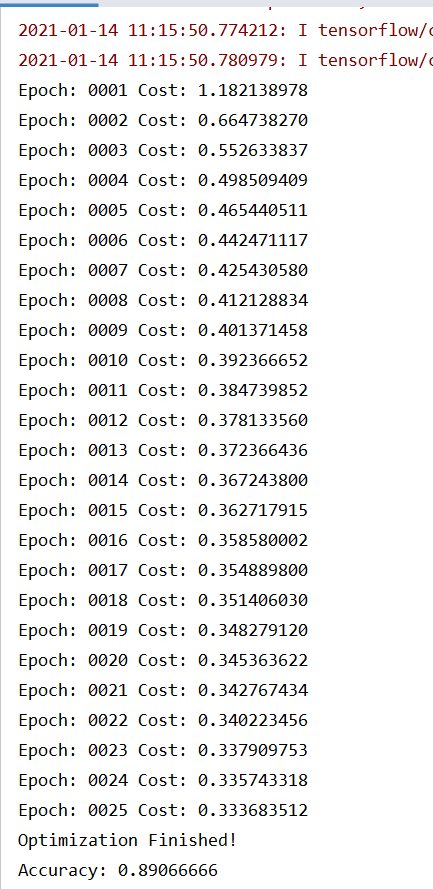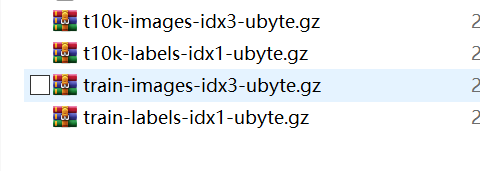import tensorflow.compat.v1 as tf tf.disable_v2_behavior() #from tensorflow.examples.tutorials.mnist import input_data import input_data #导入实验所需的数据 mnist = input_data.read_data_sets("D:大二Java大三寒假作业大三寒假作业深度学习算法部分",one_hot = True) #设置训练参数 learning_rate=0.01 training_epochs=25 batch_size=100 display_step=1 #构造计算图,使用占位符placeholder函数构造变量x,y, x=tf.placeholder(tf.float32,[None,784]) y=tf.placeholder(tf.float32,[None,10]) #使用Variable函数,设置模型的初始权重 W=tf.Variable(tf.zeros([784,10])) b=tf.Variable(tf.zeros([10])) #构造逻辑回归模型 pred=tf.nn.softmax(tf.matmul(x,W)+b) #构造代价函数cost cost=tf.reduce_mean(-tf.reduce_sum(y*tf.log(pred),reduction_indices=1)) #使用梯度下降法求最小值,即最优解 optimizer=tf.train.GradientDescentOptimizer(learning_rate).minimize(cost) #初始化全部变量 init=tf.global_variables_initializer() #.使用tf.Session()创建Session会话对象,会话封装了Tensorflow运行时的状态和控制 with tf.Session() as sess: sess.run(init) #调用会话对象sess的run方法,运行计算图,即开始训练模型 for epoch in range(training_epochs): avg_cost = 0 total_batch = int(mnist.train.num_examples / batch_size) for i in range(total_batch): batch_xs, batch_ys = mnist.train.next_batch(batch_size) _, c = sess.run([optimizer, cost], feed_dict={x: batch_xs, y: batch_ys}) avg_cost += c / total_batch if (epoch+1) % display_step == 0: print("Epoch:", '%04d' % (epoch + 1), "Cost:","{:.09f}".format(avg_cost)) print("Optimization Finished!") #测试模型 correct_prediction = tf.equal(tf.argmax(pred, 1), tf.argmax(y, 1)) #评估模型的准确度 accuracy = tf.reduce_mean(tf.cast(correct_prediction, tf.float32)) print("Accuracy:", accuracy.eval({x: mnist.test.images[:3000], y: mnist.test.labels[:3000]}))
from tensorflow.examples.tutorials.mnist import input_data不能使用,由于我的D:anaconda3Libsite-packages ensorflowexamples下缺少tutorials不能下载
examples所有可以用import input_data代替。
如果所给的文件出现问题是,需要重新下载四个文件


